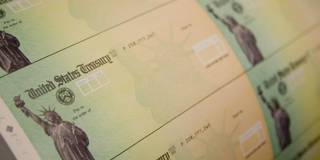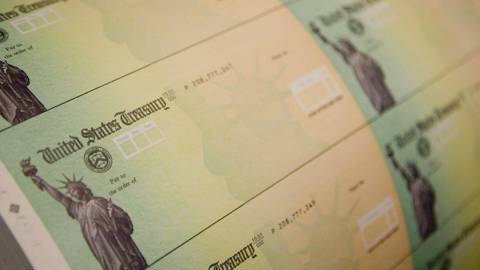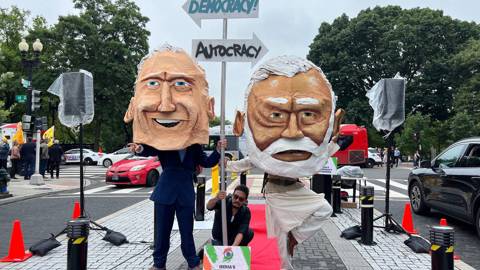While some inflationary pressures in recent years have come from increased demand, many others have resulted from supply disruptions that cannot be solved with interest-rate hikes. We must abandon the long-held assumption that central banks are the only institutions that can and should ensure price stability.
WASHINGTON, DC – The US Federal Reserve is not “in charge” of inflation, nor is any other central bank. That is the big lesson from the past few years, yet because so few experts are talking about it, macroeconomic misdiagnoses and flawed policy advice go unquestioned. Some commentators still blame the recent inflation in the United States entirely on the Fed or President Joe Biden’s American Rescue Plan, and one renowned expert even argued, a year ago, that unemployment will need to increase and stay elevated for half a decade to bring inflation back to the 2% target rate.
Clearly, that isn’t true. Yet when such claims go unchallenged, it affects households’ preparations and businesses’ plans (“a recession is coming”) and expectations about inflation (“it will take years for inflation to come down”). To understand what is really going on, let’s take a step back and consider a thumbnail sketch of the past four years.
When COVID-19 arrived in 2020, many globally integrated economies shut down to protect lives, and that caused considerable disruptions for workers, parents, and small businesses. But at least in countries such as the US, government relief packages were generous, wide-ranging, and available to all but high-income individuals.
In early 2021, the American Rescue Plan provided the final round of relief checks. By the summer of that year, COVID-19 appeared to be fading away, and the vaccination campaign was gaining speed. But the emergence of the Delta and Omicron variants then caused new waves of infections around the world. Meanwhile, the pandemic had exposed the brittleness of “just-in-time” supply chains, and discredited the long-held assumption that cheap labor would always be plentiful. The US experienced labor shortages, which in turn led to faster wage growth as employers sought to hire or retain low-wage workers.
In 2022, Russia introduced a new economic shock with its full-scale invasion of Ukraine. That added to economic hardship around the world, putting extreme pressure on natural-gas prices (especially in Germany) and on food and other commodities in the Global South.
From our current vantage point, we should consider whether it would have made any difference if the Fed had started hiking interest rates six months earlier than it did. Would an earlier “lift off” have kept inflation at bay? While some of the dynamics mentioned above were demand-driven and potentially susceptible to monetary-policy changes, others clearly were not. We must move beyond the idea that the Fed can and should be the only institution to help bring inflation down. When it comes to supply disruptions – of which there have been many – central banks have only limited tools.
Over the past three years, the media have been full of stories featuring interviews with ordinary people who are upset about gasoline, food, and housing prices. When necessities become inaccessible for many households, such sentiments are understandable. What is not understandable is the impulse among monetary-policy experts to read these stories and say, “The Fed’s got this.” After all, higher interest rates will not fix supply-side inflation; if anything, they can make matters worse by slowing the growth in capital investment and the stock of affordable housing.
That said, America’s $26 trillion economy moves quickly, requiring fiscal- and monetary-policymakers alike to remain flexible. Last summer, Adam Shapiro of the Federal Reserve Bank of San Francisco estimated that around half of the inflation at the time reflected supply-side problems. Now, he estimates that demand-driven factors are more important for inflation. This rebalancing is a welcome development. Moreover, we now have a cottage industry of analysts examining the demand and supply dynamics behind inflation. This will be a central question in any future inflationary episode.
Another lesson of the past four years is that while fiscal authorities have more precise tools with which to address inflationary supply disruptions, they face much more political combat than do policymakers at central banks. One way to mitigate this problem is to consult a wide range of subject-matter experts and devise a plan for tackling supply-side inflation ahead of time. The first tranche of fiscal stimulus in the face of a crisis is usually straightforward and unanimously supported. But the process then tends to become contentious with later rounds. A better approach, then, would be to enact automatic stabilizers, such as direct payments to households that kick in once the unemployment rate crosses a predetermined threshold.
Such “off-the-shelf” guidance might not be perfect, but it is likely to be better than the spur-of-the-moment ideas that emerge after a recession has already begun. Moreover, it would allow fiscal authorities to focus on sectors that are essential and poised to pass inflation down to most other sectors. Using input-output tables, the economist Isabella M. Weber and her co-authors have found that a significant share of the recent inflation can be attributed to just a few sector-specific shocks (such as those in the oil and gas sector).
With these data in hand, there are numerous strategies that fiscal authorities could pursue to address price instability, whether through a temporary, well-designed tax on extraordinary (windfall) profits, or through targeted subsidies to cap price increases for consumers (as with Germany’s “gas price brake”).
The Fed itself should welcome such interventions, as they would alleviate some of the political pressure that threatens its independence. While the Fed can still move much faster than Congress and the White House during an emergency, there is no reason fiscal authorities should discount their potential role in addressing price instability. Monetary-policy decisions can be made fast, but fiscal policy ultimately is more lasting.
We must remember that while high inflation implies hardship, high unemployment is a tragedy. Monetary and fiscal authorities both have powerful tools at their disposal. The fact that central banks have a mandate to keep inflation low does not mean that they should be the only game in town.






WASHINGTON, DC – The US Federal Reserve is not “in charge” of inflation, nor is any other central bank. That is the big lesson from the past few years, yet because so few experts are talking about it, macroeconomic misdiagnoses and flawed policy advice go unquestioned. Some commentators still blame the recent inflation in the United States entirely on the Fed or President Joe Biden’s American Rescue Plan, and one renowned expert even argued, a year ago, that unemployment will need to increase and stay elevated for half a decade to bring inflation back to the 2% target rate.
Clearly, that isn’t true. Yet when such claims go unchallenged, it affects households’ preparations and businesses’ plans (“a recession is coming”) and expectations about inflation (“it will take years for inflation to come down”). To understand what is really going on, let’s take a step back and consider a thumbnail sketch of the past four years.
When COVID-19 arrived in 2020, many globally integrated economies shut down to protect lives, and that caused considerable disruptions for workers, parents, and small businesses. But at least in countries such as the US, government relief packages were generous, wide-ranging, and available to all but high-income individuals.
In early 2021, the American Rescue Plan provided the final round of relief checks. By the summer of that year, COVID-19 appeared to be fading away, and the vaccination campaign was gaining speed. But the emergence of the Delta and Omicron variants then caused new waves of infections around the world. Meanwhile, the pandemic had exposed the brittleness of “just-in-time” supply chains, and discredited the long-held assumption that cheap labor would always be plentiful. The US experienced labor shortages, which in turn led to faster wage growth as employers sought to hire or retain low-wage workers.
In 2022, Russia introduced a new economic shock with its full-scale invasion of Ukraine. That added to economic hardship around the world, putting extreme pressure on natural-gas prices (especially in Germany) and on food and other commodities in the Global South.
From our current vantage point, we should consider whether it would have made any difference if the Fed had started hiking interest rates six months earlier than it did. Would an earlier “lift off” have kept inflation at bay? While some of the dynamics mentioned above were demand-driven and potentially susceptible to monetary-policy changes, others clearly were not. We must move beyond the idea that the Fed can and should be the only institution to help bring inflation down. When it comes to supply disruptions – of which there have been many – central banks have only limited tools.
SPRING SALE: Save 40% on all new Digital or Digital Plus subscriptions
Subscribe now to gain greater access to Project Syndicate – including every commentary and our entire On Point suite of subscriber-exclusive content – starting at just $49.99.
Subscribe Now
Over the past three years, the media have been full of stories featuring interviews with ordinary people who are upset about gasoline, food, and housing prices. When necessities become inaccessible for many households, such sentiments are understandable. What is not understandable is the impulse among monetary-policy experts to read these stories and say, “The Fed’s got this.” After all, higher interest rates will not fix supply-side inflation; if anything, they can make matters worse by slowing the growth in capital investment and the stock of affordable housing.
That said, America’s $26 trillion economy moves quickly, requiring fiscal- and monetary-policymakers alike to remain flexible. Last summer, Adam Shapiro of the Federal Reserve Bank of San Francisco estimated that around half of the inflation at the time reflected supply-side problems. Now, he estimates that demand-driven factors are more important for inflation. This rebalancing is a welcome development. Moreover, we now have a cottage industry of analysts examining the demand and supply dynamics behind inflation. This will be a central question in any future inflationary episode.
Another lesson of the past four years is that while fiscal authorities have more precise tools with which to address inflationary supply disruptions, they face much more political combat than do policymakers at central banks. One way to mitigate this problem is to consult a wide range of subject-matter experts and devise a plan for tackling supply-side inflation ahead of time. The first tranche of fiscal stimulus in the face of a crisis is usually straightforward and unanimously supported. But the process then tends to become contentious with later rounds. A better approach, then, would be to enact automatic stabilizers, such as direct payments to households that kick in once the unemployment rate crosses a predetermined threshold.
Such “off-the-shelf” guidance might not be perfect, but it is likely to be better than the spur-of-the-moment ideas that emerge after a recession has already begun. Moreover, it would allow fiscal authorities to focus on sectors that are essential and poised to pass inflation down to most other sectors. Using input-output tables, the economist Isabella M. Weber and her co-authors have found that a significant share of the recent inflation can be attributed to just a few sector-specific shocks (such as those in the oil and gas sector).
With these data in hand, there are numerous strategies that fiscal authorities could pursue to address price instability, whether through a temporary, well-designed tax on extraordinary (windfall) profits, or through targeted subsidies to cap price increases for consumers (as with Germany’s “gas price brake”).
The Fed itself should welcome such interventions, as they would alleviate some of the political pressure that threatens its independence. While the Fed can still move much faster than Congress and the White House during an emergency, there is no reason fiscal authorities should discount their potential role in addressing price instability. Monetary-policy decisions can be made fast, but fiscal policy ultimately is more lasting.
We must remember that while high inflation implies hardship, high unemployment is a tragedy. Monetary and fiscal authorities both have powerful tools at their disposal. The fact that central banks have a mandate to keep inflation low does not mean that they should be the only game in town.